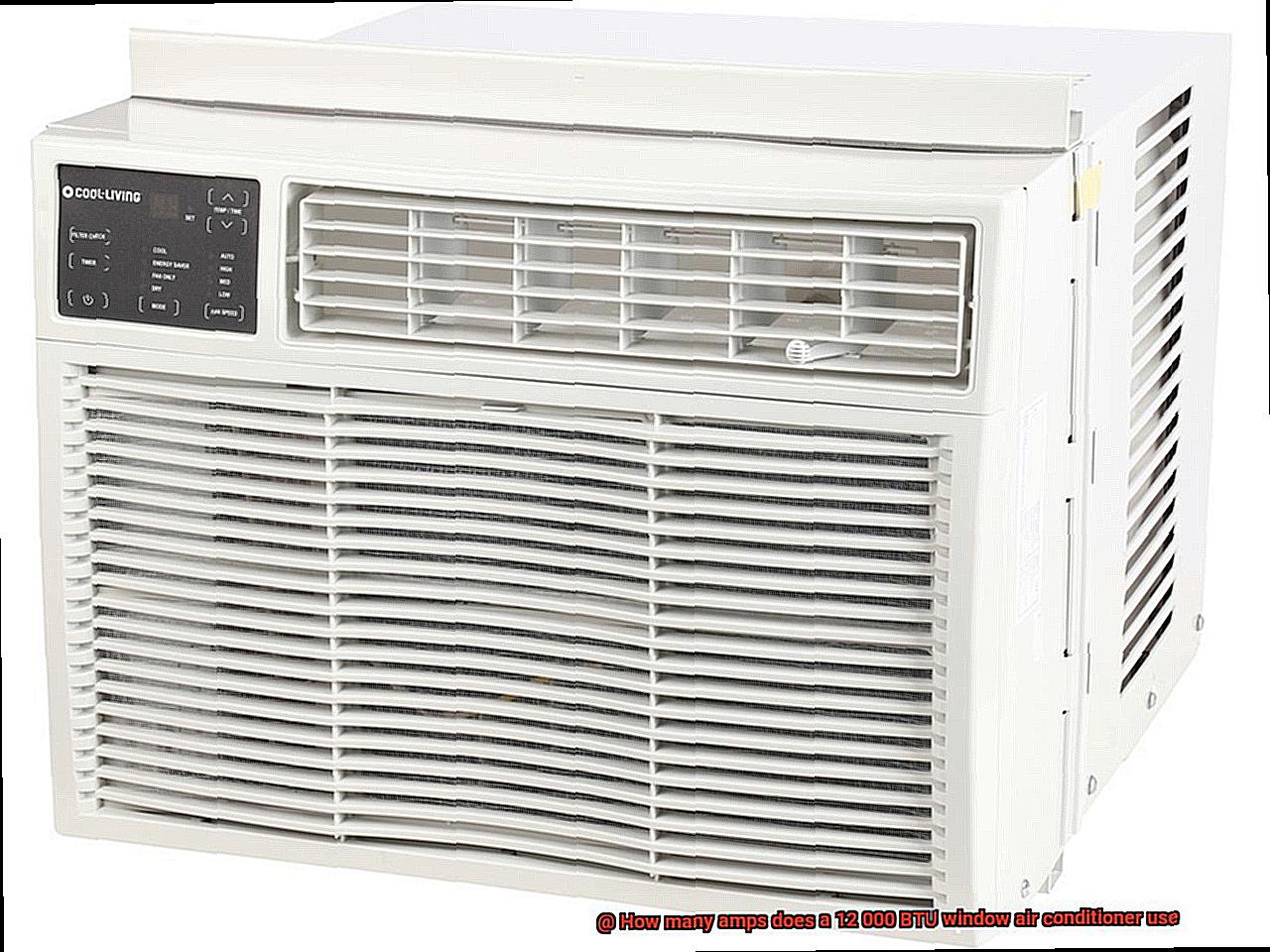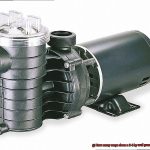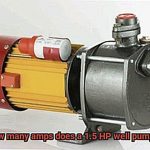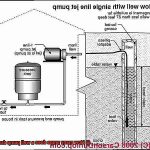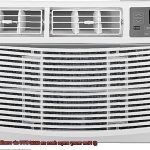Summer is almost here, and with it comes the unbearable heat that can make us all feel like we’re melting. That’s why many of us rely on window air conditioners to keep our homes cool and comfortable. But before you invest in a 12,000 BTU window air conditioner, you need to know how much power it consumes.
Electricity usage is the most significant factor when it comes to air conditioning, and it’s measured in amps. Finding out how many amps a 12,000 BTU window air conditioner uses is essential to avoid overloading your electric circuits and keeping your energy bills under control.
Several factors come into play when determining the number of amps used by a 12,000 BTU window air conditioner. These include the brand and model, age, and size of the room. However, on average, a 12,000 BTU window air conditioner uses around 10-12 amps of electricity.
In this blog post, we’ll explore everything you need to know about how many amps a 12,000 BTU window air conditioner uses. We’ll also provide some tips on how to minimize electricity usage while still keeping your home cool and comfortable during the long summer months.
So, let’s dive in together and ensure we stay cool all summer long.
What is Amperage?
Contents
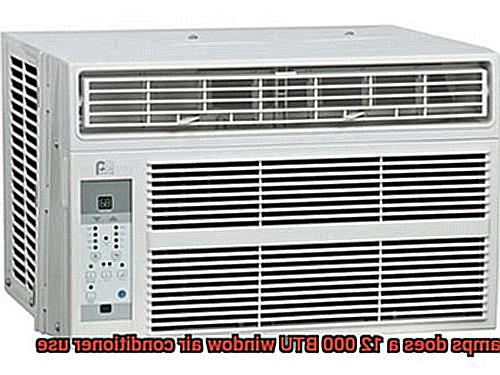
Amperage, also known as current, measures the rate at which electrical current flows through a circuit and is measured in amperes (A). Alongside voltage and resistance, amperage plays a crucial role in understanding how electrical appliances work.
Understanding amperage is particularly important when it comes to knowing how much power an appliance uses. If an appliance has a higher amperage rating, it means it’s using more power and consuming more electricity. This can have a significant impact on your energy bills over time.
Take window air conditioners for example. Most 12,000 BTU window air conditioners require around 10-12 amps to run. However, this number can vary depending on the make and model of the unit. To determine the exact amperage consumption of your specific air conditioner, it’s always best to check the manufacturer’s specifications or consult with an expert.
But amperage is only part of the story when it comes to energy usage. Voltage and wattage ratings also play a significant role in determining how much electricity an appliance will consume. That’s why it’s important to consider all three ratings when choosing an appliance.
When selecting an air conditioner, for instance, look for models with a high SEER (Seasonal Energy Efficiency Ratio) rating. These units are designed to use less energy while still providing effective cooling. Additionally, opting for eco-friendly refrigerants or energy-efficient models can help reduce your carbon footprint and save you money on your energy bills.
Estimating the Amperage of a 12,000 BTU Window Air Conditioner
Before you can kick back and relax in a chilly room, it’s important to estimate the amperage of your unit to keep it running smoothly and safely.
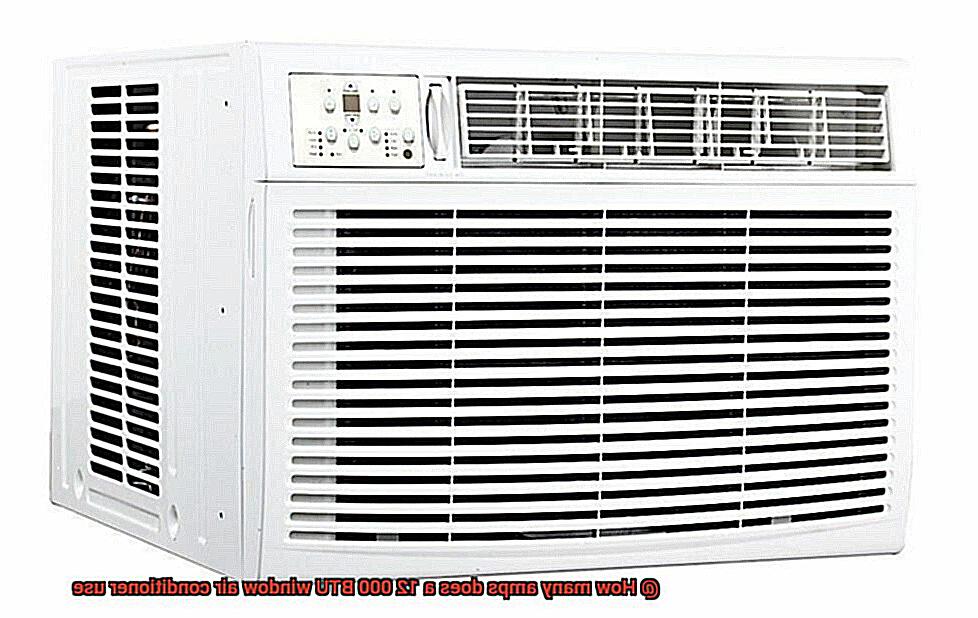
Amperage is the measure of electrical current flowing through a circuit. If your air conditioner doesn’t receive enough electrical power, it can cause electrical overloads and potential damage to the unit. But don’t worry. Calculating the amperage of your 12,000 BTU window air conditioner is simple and easy.
Firstly, let’s talk about voltage and wattage. Most air conditioners operate on standard household voltage of 115 volts. You can find the wattage of your unit on a label or in the owner’s manual. To estimate the amperage, use this formula: Amps = Watts / Volts.
For example, if your 12,000 BTU air conditioner has a wattage of 1,200 watts, then the amperage would be calculated as follows: 1,200 watts / 115 volts = 10.43 amps. Keep in mind that this calculation provides an estimate of the amperage required for the air conditioner to operate. Actual amperage may vary based on factors such as fluctuations in voltage or changes in temperature.
But wait, there’s more. It’s also important to ensure that your electrical system can handle the load of your 12,000 BTU air conditioner. You may need to consult with an electrician to ensure that your wiring and circuit breaker can handle the electrical demands of your air conditioning unit.
Voltage and Wattage Ratings in Air Conditioners
When it comes to selecting an air conditioner, voltage and wattage ratings are two of the most crucial factors to consider. These ratings can provide insight into how much power your air conditioner will require to operate and how much it will cost to run.
The voltage rating of an air conditioner is the amount of electrical power required to operate the unit. For most 12,000 BTU window air conditioners, the voltage rating is typically 115 volts. This means that your air conditioner must be connected to an outlet capable of handling this amount of power.
The wattage rating of an air conditioner indicates the amount of power the unit uses. A 12,000 BTU window air conditioner can have a wattage rating ranging from 1000 to 1500 watts. The higher the wattage rating, the more energy your air conditioner will consume.
It’s crucial to note that the number of amps used by your air conditioner will vary based on the specific model and its efficiency rating. However, as a general rule of thumb, a 12,000 BTU window AC unit will use between 9 and 12 amps. This means that if you plan to plug your air conditioner into a standard 15-amp electrical outlet, you may need to use an extension cord with a higher amperage rating or have an electrician install a dedicated circuit for your air conditioner.
In addition to considering voltage and wattage ratings, it’s also vital to look for energy-efficient features like programmable thermostats and variable speed fans when selecting an air conditioner. These features help decrease the total energy consumption of the unit and save you money on your energy bills.
Factors to Consider When Choosing an Air Conditioner
It’s time to get yourself an air conditioner. But with so many options available, how do you know which one is right for you? As an expert in the field, I am here to guide you through the factors to consider when selecting an air conditioner.
The first factor to consider is the size of the unit. The larger the room or space you need to cool, the more BTUs (British Thermal Units) you will need. For example, a 12,000 BTU window air conditioner can effectively cool a room up to 550 square feet. So make sure to measure your space and choose a unit that can handle it.
Next, look for units with an Energy Star rating. These air conditioners meet specific energy efficiency standards set by the US Environmental Protection Agency (EPA). They use less energy, saving you money on your electricity bill in the long run while also being environmentally friendly.
Noise level is another crucial factor to consider, especially if you plan to use the air conditioner in a bedroom or other quiet space. Look for units with a low decibel (dB) rating. This rating indicates how loud the unit is when running and can help ensure peaceful sleep.
The type of air filter used in the unit also has an impact on air quality. Some filters are better at removing pollutants and allergens from the air than others. Consider what type of filter would work best for you and your family’s needs.
You should also look at the type of controls available on the unit. Do you prefer digital controls or manual ones? And what about any special features like a timer or remote control? These features can make using your air conditioner more convenient and comfortable.
Ultimately, choosing the right air conditioner for your space will depend on your specific needs and preferences. By considering factors like size, energy efficiency, noise level, air filter type, and available features, you can find a unit that will keep you cool and comfortable all summer long.
The Role of SEER Ratings in Energy Usage
These ratings play a critical role in energy usage and cost when it comes to purchasing an air conditioner. In simple terms, the Seasonal Energy Efficiency Ratio (SEER) measures the cooling output of an AC unit divided by the amount of electrical energy it consumes. The higher the SEER rating, the more efficient the air conditioner is at converting electricity into cooling power.
But why should you care about SEER ratings? The answer is simple – higher SEER ratings can save you significant amounts of money on energy bills over time. While all new air conditioning units are required to have a minimum SEER rating of 13, some models can have even higher SEER ratings, up to 25 or more. Although these units may have a higher upfront cost, they are worth considering as they can lead to substantial long-term savings.
For instance, a 12,000 BTU window air conditioner with a SEER rating of 13 will typically use around 9.5 amps. On the other hand, a unit with a SEER rating of 25 may only use around 5 amps. By choosing an air conditioner with a high SEER rating, you can not only save money on energy bills but also reduce your carbon footprint and help the environment.
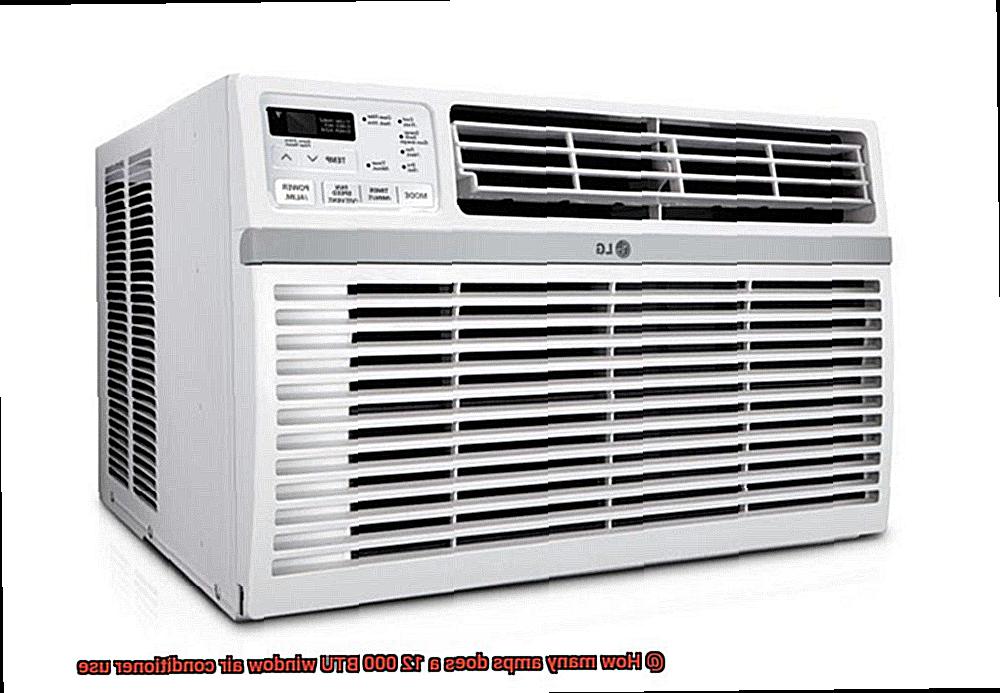
It’s worth noting that amperage usage may vary based on other factors such as voltage and the specific model of the air conditioner. However, selecting an air conditioner with a high SEER rating is an informed decision that can impact your energy usage and cost over time.
Eco-Friendly Refrigerants and Energy Efficiency
If so, consider the impact it will have on the environment. Luckily, there are steps you can take to stay cool while reducing your carbon footprint.
One of the easiest ways to reduce environmental impact is by choosing an air conditioner that uses eco-friendly refrigerants. Unlike traditional refrigerants that can contribute to ozone depletion and climate change, eco-friendly refrigerants like R-410A have a much lower global warming potential. Look for models that use this type of refrigerant or others like it.
Energy efficiency is another crucial factor to consider. The higher the energy efficiency rating (EER) of your unit, the less electricity it will consume while in use. This not only saves money on utility bills but also reduces your carbon footprint. Look for models with the Energy Star rating, which means they meet certain criteria set by the Environmental Protection Agency for energy efficiency and environmental impact.
But don’t stop there. You can take steps to make sure your unit runs as efficiently as possible. Look for features like programmable thermostats and timers that allow you to control when the unit runs and at what temperature. By taking these small steps, you can reduce energy consumption even further.
S2Xp0dvGRPQ” >
Conclusion
To wrap things up, a 12,000 BTU window air conditioner is a fantastic investment for those hot summer days. However, it’s crucial to keep in mind how much power it consumes to avoid overloading your electric circuits and keeping your energy bills under control.
When selecting an air conditioner, be sure to look for models with high SEER ratings and eco-friendly refrigerants. These features not only reduce your carbon footprint but also save you money on energy bills.
Calculating the amperage of your 12,000 BTU window air conditioner is simple and easy. Just use the formula Amps = Watts / Volts to estimate the amperage required for safe operation.
Don’t forget to consider other factors such as room size, noise level, air filter type, available features like timers or remote controls, and Energy Star ratings when choosing an air conditioner. By taking these small steps towards energy efficiency and environmental responsibility, you can stay cool while reducing your carbon footprint.
In summary, knowing how many amps a 12,000 BTU window air conditioner uses is crucial for making informed decisions about energy consumption and cost. With proper research and consideration of various factors such as SEER ratings and eco-friendly refrigerants, you can choose an air conditioning unit that meets both your cooling needs and environmental values.
